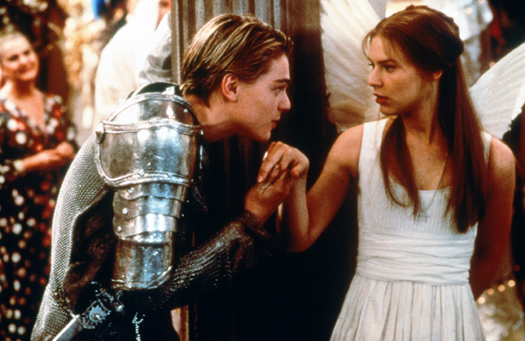Teaching Romeo and Juliet - the role of digital technologies
How do you teach Romeo and Juliet? With the play a common part of high school curriculum, this question crops up frequently. And in Queensland, Australia (where I live and work), it is taught frequently as part of the Year 10 syllabus.

In the very early stages of a literature review on the subject, what immediately strikes me is the tendency to connect Romeo and Juliet with digital technologies. It seems to be an instinctive manoeuvre by motivated, passionate educators seeking to engage secondary school students – experiencing perhaps their first taste of Shakespeare – through a medium that students are familiar with and which stimulates their interest. The following are a few examples of research and teaching projects which demonstrate or investigate this correlation – from my initial cursory explorations:
- Pamela Carver, 'What would Romeo and Juliet say to Jack and Piggy?', Learning & Leading with Technology, February 2013, 26-28.
- Roberta Hammett, 'Tech FTW!!!’ Ninth Graders, Romeo and Juliet, and Digital Technologies,' Language and Literacy 15:1, (2013), 6-22.
- Such Tweet Sorrow
- Geoffrey Way, 'Social Shakespeare: Romeo and Juliet, Social Media, and Performance,' Journal of Narrative Theory 41.3 (2011): 401-420.
- Helen Zdriluk, ‘Facebooked: Romeo and Juliet as educational theatre: an improbable fiction?', Research in Drama Education: The Journal of Applied Theatre and Performance, 21:3 (2016), 373-384.
Do we make this connection when teaching any Shakespeare play – or is it more common with Romeo and Juliet?
If my initial impressions are correct, then the relationship between teaching Romeo and Juliet, digital technologies, cultures and literacies, bears further investigation. And what may lie at the heart of this nexus is a preoccupation with the concept of youth:
"The most startling thing about Romeo and Juliet for a modern audience is the extreme youth--and extreme passion--of the young lovers." (Youth and Marriage, Internet Shakespeare Editions)
This indelible connection between youth and Romeo and Juliet not only stems from the youthful lovers portrayed in the play, nor solely the text’s thematic concerns with youthfulness, but also (and perhaps largely) our cultural shaping of the play as integrally related to ‘youth culture’. As Rachel Prusko notes, 'much scholarship on Romeo and Juliet has addressed the play's influence on current cultural perceptions of teenagers’ (p. 113).
Charles Conaway argues:
“at the same time that modern popular culture shapes Romeo and Juliet for consumption in and by youth culture, it paradoxically and problematically blames youth culture for the tragedies that befall the play's lovers. I suggest, then, that when we teach Shakespeare's play, we should consider teaching it both in and against its reception in modern popular culture.” (p.26)
My interest is in what we know about how this relationship between the play and our cultural perception of teenagers affects Shakespeare pedagogy. From a presentist perspective, the question becomes more about how our own understandings of the students we teach is inflecting our approaches to them and our approaches to Romeo and Juliet, and more complicatedly, how we integrate both in the classroom.
What are your experiences teaching Romeo and Juliet? What works for you and what doesn’t – and how do you intersect Romeo and Juliet and digital technologies and literacies in the classroom? I’d love to hear your thoughts on social media or email me (info@shakespearereloaded.edu.au).
Works Cited
Conaway, Charles. 'Teaching Romeo and Juliet in and against Modern Popular Culture.’ This Rough Magic, Vol. 2, No. 2, (December, 2011), pp. 25-52.
Prusko, Rachel. 'Youth and privacy in Romeo and Juliet.' Early Theatre 19.1 (2016): 113-136.
'Youth and Marriage.' Internet Shakespeare Editions. Accessed 11 February 2018. http://internetshakespeare.uvic.ca/Library/SLT/plays/romeo%20and%20juliet/marriage.html.
